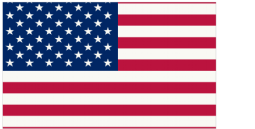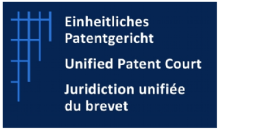This edition features updates from: The United States of America (USA) and the Unified Patent Court (UPC).
The Irides Weekly Update is our round-up of patent litigation news highlights from around the world. Taking its name from the plural of “iris” - a nod to the ability of Irides to see what’s happening around the world.

USA
Federal Circuit knocks out Mondis display patent on written description grounds in Mondis v LG.
The Court of Appeals for the Federal Circuit has overturned a New Jersey jury verdict in a long-running dispute between Mondis and LG, holding that two key claims of Mondis’s display patent are invalid because the patent specification did not actually disclose what the claims (as amended) required. The decision, issued on 8 August 2025, ends the case in LG’s favour and renders infringement and damages issues moot.
At the heart of the appeal was a subtle but important amendment to the claim language made during prosecution. The original claim contemplated an “identification number for identifying [the] display unit,” i.e. a number that points to a specific, individual monitor. To overcome prior art, Mondis amended the claim to require an identification number “for identifying at least a type of said display unit,” broadening the concept from a one-to-one device identifier to a category or model-level identifier. The Federal Circuit held that the patent’s text never described or otherwise showed possession of this “type” concept at the time of filing, even implicitly.
For UK and international audiences, the US legal test is broadly analogous to the familiar requirement that the specification must disclose the invention the patentee later claims. In US terms, this is the “written description” requirement in pre‑AIA (America Invents Act) §112, which asks whether the patent, viewed objectively and on its face, shows the inventors actually had the claimed subject-matter. Here, the Court found the Mondis patent repeatedly and consistently described control based on identifiers tied to a specific computer or a specific display (i.e. a ‘a one-to-one relationship’), and even when discussing device communication, the patent framed it as allowing the computer to communicate with “a specific display device,” not a display “type”. The only use of “type of display device” appeared in the background section describing prior art and could not support the patentee’s invention.
In reaching its decision, the court also addressed three arguments from Mondis contending the patent was valid. First, Mondis suggested it could rely on the presumption that issued patents are valid unless convincingly shown otherwise. The Federal Circuit accepted that presumption exists but emphasised that a patent can still be invalidated on the specification’s face when the text does not support the full scope of the claim. That was the case here. Second, Mondis pointed to expert testimony and trial dynamics, but crucially, Mondis’s own expert acknowledged the specification does not expressly recite a “type” identifier, and Mondis did not present rebuttal evidence tying the words of the patent to the broadened concept. Third, Mondis relied on the fact that the examiner allowed the amendment during prosecution. The Court rejected that as determinative: the record showed the examiner agreed the “type” language avoided the cited prior art, not that the specification provided written description for the new breadth.
Procedurally, the case had a complex history: a 2019 jury found for Mondis on liability and wilfulness, followed by a damages retrial in 2023 that resulted in a $14.3M award (down from an initial $45M). On appeal, the Federal Circuit reversed the decision, holding claims 14 and 15 invalid for lack of written description and directing entry of judgment for LG; all questions about infringement, damages, enhanced damages, fees, and interest fell away as moot.

UPC
Hamburg local division grants a PI covering Spain against a defendant who was liable through an anchor defendant.
[UPC_CFI_387/2025]
In Dyson Technology Ltd v Dreame International, the Hamburg Local Division of the Unified Patent Court (UPC) issued a preliminary injunction (PI) against:
- Dreame International (Hong Kong) Limited (the producer of the allegedly infringing products and the operator of the website offering the product for sale in Europe);
- Teqphone GmbH (the distributor of the products in Germany);
- Eurep GmbH (the authorised representative for manufacturers based in a non-EU-Member-State including defendant (1)); and
- Dreame Technology AB (the Swedish affiliate of defendant (1)).
The PI was issued to prevent further infringement of Dyson’s European Patent EP3119235, which covers attachments for handheld hair care appliances such as Dyson’s Airwrap. The patent relates to a tubular attachment with a fluid outlet formed by overlapping wall ends, facilitating hair styling via the Coandă effect (the tendency of a fluid jet, like air, to stay attached to a nearby curved surface rather than flowing in a straight line).
Dyson alleged infringement by Dreame’s products, including the “Dreame Airstyle” and “Dreame Pocket” (older models), and the newer “Dreame Airstyle Pro” and “Dreame Pocket Neo.” The court conducted a relatively thorough assessment of claim construction and the likelihood of infringement (over 50 paragraphs). The Court held that it was more likely than not that the:
- patent-in-suit is valid (the defendants had not raised substantive invalidity arguments);
- older models would infringe the patent; and
- newer models would not infringe the patent.
The Court also found that the weighing of interests was in favour of Dyson.
The UPC confirmed its international jurisdiction over all the defendants for the UPC member states and, notably, extended jurisdiction to Spain for defendant (1) and its authorised EU representative, defendant (3). The Court, following the ECJ’s ruling in BSH Hausgeräte GmbH v Electrolux AB. (C-339/22) and the subsequent UPC case law, confirmed it has international jurisdiction with respect of the infringement of national parts of a European Patent outside of the UPC member states. The Court held that defendant (3), as an indispensable intermediary under EU product safety regulations, could serve as an anchor defendant under Article 8(1) Brussels I Recast Regulation, thereby enabling jurisdiction over defendant (1) for its acts in Spain. Therefore, the UPC had jurisdiction over both defendants (1) and (3) for their acts in Spain. However, as there was not enough evidence to demonstrate that defendants (2) or (4) were involved in any marketing of the allegedly infringing products in Spain the Spanish portion of the PI did not extend to those defendants.
The Court, citing direct competition, risk of market erosion, and the strategic timing of Dreame’s product launch, exercised its discretion to grant the requested provisional measures (a preliminary injunction). For the reasons laid out above, the injunction:
- covers the territory of those contracting member states for which the patent has effect;
- covers the Spanish national part of the patent-in-suit, with respect to defendants (1) and (3); and
- only applies to the older models that the court held it was more likely than not infringed the patent-in-suit.
This case was the first UPC injunction covering Spain and the first PI granted by a UPC court covering a jurisdiction outside of a UPC contracting state. In addition, the Spanish portion of the PI was the first time that such an extraterritorial injunction has been granted against a defendant who was included in the action due to an anchor defendant in its corporate group.

UPC
The Hague Local Division rejects Moderna’s request to review the procedural order dismissing preliminary objections relating to jurisdiction and competence.
[UPC_CFI_191/2025 and UPC_CFI_192/2025]
In Moderna v Genevant (UPC_CFI_191/2025 and UPC_CFI_192/2025), the Hague Local Division (LD) reviewed Moderna’s r..333 RoP application seeking revision of a procedural order, dated 23 May 2025, that dismissed its preliminary objections to the UPC’s jurisdiction and competence in two parallel infringement actions brought by Genevant and Arbutus Biopharma. We previously reported on the Hague LD's response to Moderna's preliminary objections here.
The claimants had alleged infringement of EP 2 279 254 and EP 4 241 767 by fifteen Moderna entities domiciled across UPC contracting states, other non-UPC EU member states and third states such as the US, UK and Switzerland. In its preliminary objections, Moderna had challenged the UPC’s international jurisdiction over certain defendants, particularly those domiciled outside UPC member states, and argued that the court lacked long-arm jurisdiction for acts outside the UPC territory. Furthermore, Moderna had challenged the Hague LD's jurisdiction in respect of the Moderna entities which were neither domiciled nor accused of infringing acts in the Netherlands.
The Hague LD's 23 May 2025 procedural order dismissed Moderna's preliminary objections, save that it reserved a decision on international jurisdiction to the main proceedings. Moderna sought to review this order under r. 333 RoP on the following bases:
- The decision did not take into account the burden of proof for infringing acts within the UPC territory.
- The decision did not reflect the fact that holding a marketing authorisation for use by other entities within a group structure does not qualify as an act of patent infringement, but was merely an unlawful act for which the UPC had no competence
- The decision wrongly stated that the requirements of Art. 8(1) of the Brussels Recast Regulation (or Art. 6(1) of the Lugano Convention) had been met.
The Hague LD panel (comprising Judges Brinkman, Granata and Kokke) found that Moderna had only substantiated its r. 333 RoP application for Moderna Spain and Norway. Therefore, Moderna were found not to have challenged the referral of the decision on long-arm jurisdiction to the main proceedings, the Hague LD's international jurisdiction over the defendants other than the Norwegian and Spanish entities, and the internal competence of the Hague LD or the UPC to hear the claims.
As to Moderna's first ground, the Hague LD held that the burden for establishing international jurisdiction is considerably lower than for the establishment of infringement in the main proceedings. Accordingly, the claimants were found to have sufficiently alleged collective infringement involving Moderna Netherlands in Spain and Norway, to justify international jurisdiction for those entities and avoid the risk of irreconcilable judgments under Art. 8(1) of the Brussels Recast Regulation. The decision noted that Art. 8 of the Brussels Recast Regulation does not require that collective infringement takes place in a UPC territory.
Moderna's second ground, relating to the nature of activities relating to a marketing authorisation was referred to the main proceedings.
Finally, it was held that since Moderna Netherlands was alleged to infringe the national parts of the same European Patent in Spain and Norway with the same product, the combination of same patent, same product, same country was sufficient connectivity for them to be considered co-defendants under Art. 8(1) Brussels Recast Regulation. The panel noted throughout the decision that the claimants' assertions were not so far-fetched that they could be deemed to have the sole object of ousting the national courts of Spain and Norway.
The Hague LD confirmed the previous procedural order and refused the defendants’ request for an interim appeal of the present decision.

/Passle/5f3d6e345354880e28b1fb63/MediaLibrary/Images/2025-09-29-13-48-10-128-68da8e1af6347a2c4b96de4e.png)
/Passle/5f3d6e345354880e28b1fb63/SearchServiceImages/2025-12-23-10-01-04-004-694a6860001b94fa0352717d.jpg)
/Passle/5f3d6e345354880e28b1fb63/MediaLibrary/Images/2024-08-23-11-31-07-354-66c872fb971eecc249d83d40.png)
/Passle/5f3d6e345354880e28b1fb63/MediaLibrary/Images/2025-07-10-13-52-35-189-686fc5a39f23a993118ba1a0.png)